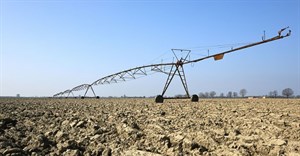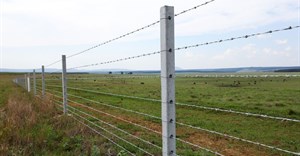An overview of rural crime and prevention devices

According to these principles, the challenges thus presented to the agricultural sector are characterised by especially the ‘appropriate targets’ and the ‘supervisors’, who cannot always keep an eye on their assets. The value of the targets (e.g. sheep) is therefore increased because of the ease with which they can be removed.
Increase in farm attacks
Farm attack statistics recently released in Parliament by the minister of police, Bheki Cele, caused quite a stir. According to the statistics, farm attacks during the 2017/18 period claimed only 47 lives, compared to 66 lives lost during the 2016/17 period.
Unfortunately, the opposite was observed for the number of farm attacks, with figures indicating an increase in the number of attacks. A total of 581 cases were noted for the 2017/18 period, which is 103 more than during the 2016/17 period.
Rural crime
According to Willie Clack, chairman of the National Stock Theft Prevention Forum and a lecturer in penology, it is very difficult to determine the seriousness of rural crime, which differs from stock theft and farm attacks.
In the case of housebreaking and where items are stolen from sheds, statistics are not recorded separately for farms. Burglaries on farms, therefore, form part of the burglary statistics of the area, whereas theft from sheds are regarded as part and parcel of business theft statistics. These figures can easily be manipulated to indicate a decrease in cases, although it isn’t necessarily the case.
He believes crime statistics serve as a barometer of a society’s social health and that one should rather focus on the number of arrests, sentences imposed, etc.
Increase in stock theft
According to Statistics SA’s survey on victims of crime in 2017, a total of 1,468,278 crimes were experienced by households. Stock theft is one of the most common crimes in South Africa, comprising 11% of all theft.
Police statistics indicating reported cases show a national increase in stock theft, with 2187 more cases reported during the 2016/17 period than in previous years – this represents an 8,8% increase in stock theft in the 2016/17 period.
Ways of protection
These figures emphasise the need for farmers to protect their livestock, as loss of livestock can have a huge impact on a farmer’s bank account. The police figures, though, are under increased scrutiny since studies indicate that it is hugely under-representative of the actual stock theft problem (Lombard et al., 2015). Part of the problem is that producers do not always report their losses.
Gone are the days of leaving open the farmyard back door. Farmers are looking for more ways to protect themselves and their families. A recent article on News24 reported that farmers are some of the regular participants in a specific self-defence course, which entails Krav Maga techniques and costs approximately R20000 per person. Unfortunately, not all farmers have that much money available and must consider other methods.
With the rapid progress in technology, most farmers have smartphones and several applications have been developed taking farmers’ safety into account. AfriForum launched its 24-hour emergency line in 2014 and recently added a panic button app for smartphones to their existing services.
These services are free to all members and include a 24-hour emergency line, which members can call during an emergency for help. The police, security companies and family are immediately informed of the emergency so they can assist. The addition of the panic button eases the process and offers additional services, such as a report and feedback service relating to suspicious persons and vehicles (at only R15 a month).
Die Plaaswag
Free State Agriculture recently launched an app called Die Plaaswag. The app is a panic button that can be activated in an emergency. When activated, 25 people are immediately informed of the situation. Other important functions of the app include reporting of crimes in the area and observation of crimes already reported by farmers. The app costs only R24,99 per month and offers a free 30-day trial period.
While these apps can alert people in case of an emergency, one disadvantage is that a cellular signal is not always available on a farm, rendering such apps ineffective. Security systems such as alarms, electrified fences and video recordings do not necessarily inform neighbours of an emergency, but can give an indication that something is wrong.
Alarms and armed reaction
There is currently a lot of competition among security companies, making alarm systems a more affordable option. The price of an alarm system is mostly determined by the size of your house and can range between R2,300 and R7,700 for all equipment, including installation costs.
For an additional fee, you can employ the services of a security company that sends an armed reaction unit to your farm if the alarm goes off. If the average farmyard is 1,000m², then a 2,2m high electrified fence can cost the farmer R110,000, installation cost included. The security systems mentioned are good once-off investments that can serve as another obstacle for criminals, and often need little maintenance.
Theft and attacks are coordinated crimes that can be planned faster and better by criminals with the help of cellular devices. The technology of Atlantic Seaboard Armed Response (ASAR) can inform farmers when cell phones enter the farm. These devices create a specific zone within which it can detect all signal frequencies.
According to ASAR, the devices are placed on routes leading to the farmyard and if a cellular device enters the zone, it will inform the farmer straightaway. Such a device costs approximately R16000 per unit and is successfully used by farmers.
Steps against stock theft
In a study conducted by the University of the Free State, farmers were asked which steps could be taken to curb stock theft. Answers included solutions such as counting the animals regularly, active patrols in the area and locking animals in a kraal at night.
The cost of each solution, as well as its efficiency and whether farmers would recommend it, was determined in the study:
Active patrols: Farmers patrol an area at night, looking for any irregularities. The cost is approximately R13,000 per annum and according to farmers, the method is 80% effective. Thanks to patrols, theft was reduced by 80% and this method is recommended 100% by farmers.
Locking animals in a kraal: It is a common practice in South Africa to keep animals in a kraal overnight, because it protects the animals against potential thieves and predators. Most farms have existing kraals and the cost of maintaining a kraal is estimated at R2,450 per annum. The efficiency of this solution is estimated at 88% and is recommended by 100% of livestock farmers.
Alternative options
If these simple options are already in place on your farm and stock theft is still a problem, alternative options such as stock theft collars, herdsmen and electrified fences can be considered. The estimated cost, recommendation and efficiency of each solution entails the following:
Stock theft collars: Collars are placed around the necks of a few animals in the herd. The collars send emergency messages to farmers if any abnormal activities take place. Around five collars per 1,200 sheep and three per 200 cattle are recommended. The cost is approximately R1,875 per collar and maintenance costs are R55 per collar per annum. It is 78% efficient and is recommended by 100% of the farmers.
Herdsmen: Livestock farmers use herdsmen to herd animals in the veld. In KwaZulu-Natal most of the herdsmen are armed. The initial cost is approximately R12,000 (housing, etc.), with an additional cost of R2,500 per month. It is 74% efficient and is recommended by 100% of the farmers.
Electrified fences: For this scenario, electrified fences are calculated for a farm of 1000ha, where the initial cost is approximately R1,67m and the annual maintenance around R10,000. Electrified fences showed a 93% decrease in theft and is recommended by all producers.
This article was written by Mario van den Heever and WA Lombard, Department of Agricultural Economics, University of the Free State, for FarmBiz magazine.
Source: AgriOrbit

AgriOrbit is a product of Centurion-based agricultural magazine publisher Plaas Media. Plaas Media is an independent agricultural media house. It is the only South African agricultural media house to offer a true 360-degree media offering to role-players in agriculture. Its entire portfolio is based on sound content of a scientific and semi-scientific nature.
Go to: http://agriorbit.com/














